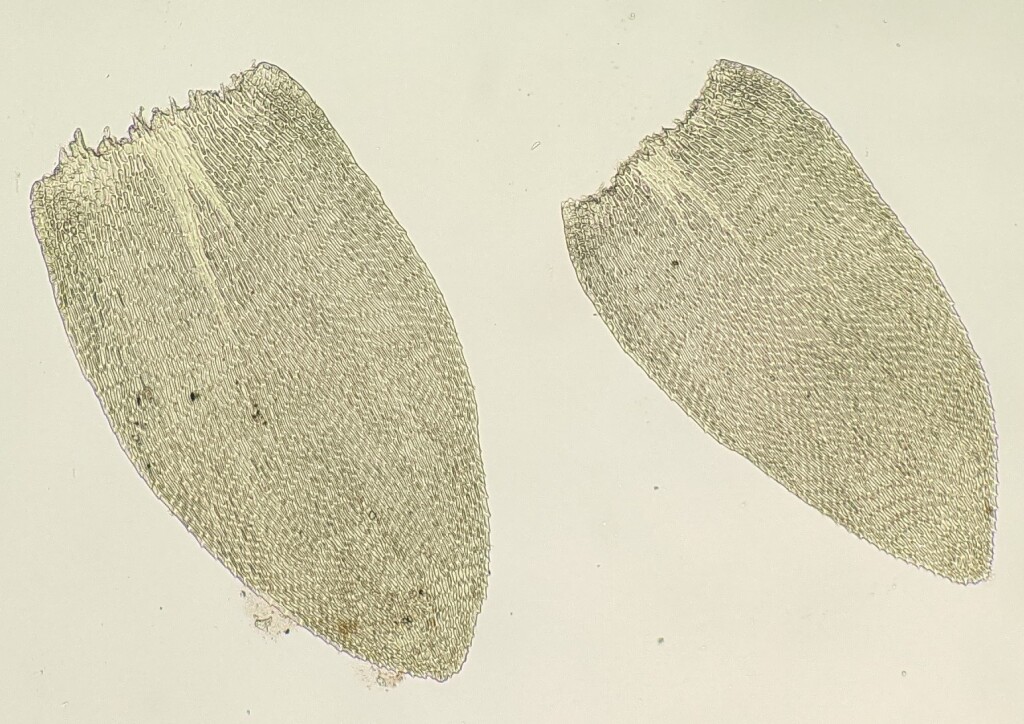Fallaciella
Dioicous. Asexual propagules absent. Wefts or closely appressed mats on rocks, tree trunks or shrub stems, or soil. Secondary stems creeping to erect ascending (not in Victoria), sometimes weakly differentiated into a basal stipe section and branched frond section, sparingly to irregularly-bipinnately branched, with reddish-brown rhizoids in ventral tufts or sometimes at elongate branch tips; branches blunt to weakly cuspidate, curled when dry; pseudoparaphyllia foliose; central stand lacking or indistinct. Stem and branch leaves differentiated by larger size of stem leaves, ovate, elliptic or obovate, weakly to strongly (not in Victoria) concave, inserted around stem and facing all directions to complanate, erect-spreading and usually homomallous when moist, scarcely altered to appressed and sometimes collapsed-wrinkled (not in Victoria) when dry; apices rounded, obtuse or acute, sometimes with a short reflexed apiculus (not in Victoria), without a hair-point; costae absent or weak, double and extending to midleaf; margins entire or serrulate, plane, incurved toward apex or sometimes weakly revolute near base; laminal cells linear, becoming shorter and rhombic or elliptic at apex, prorate at both ends but most distinctly at apical end; alar cells differentiated, quadrate to rectangular, forming ±triangular patches that ascend along margins. Capsule inclined to horizontal, symmetric, ellipsoid, oblong or cylindric, with a weakly differentiated annulus. Calyptra cucullate, smooth, glabrous. Opercula oblique-rostrate or symmetric and apiculate from conic base. Exostome teeth without a distinct shoulder; endostome equal to exostome height, with a basal membrane c. half height of exostome; cilia present.
Two species in New Zealand and one extending to Chile, the Auckland, Campbell and Chatham Islands, and eastern Australia; one species in Victoria.
Fallaciella gracilis was previously included in Camptochaete but was removed from this genus and the Lembophyllaceae and placed in the Sematophyllaceae based on its resemblance to a Northern Hemisphere genus that at the time was placed in the Sematophyllaceae (Crum 1991). However, the placement of Fallaciella in the Lembophyllaceae that is followed here is supported by phylogenetic analyses of chloroplast and nuclear DNA sequences (Quandt et al. 2009).
 Spinning
SpinningCrum, H. (1991). A partial clarification of the Lembophyllaceae. Journal of the Hattori Botanical Laboratory 69: 313–322.
Quandt, D.; Huttunen, S.; Tangney, R.; Stech, M. (2009). Back to the future? Molecules take us back to the 1925 classification of the Lembophyllaceae (Bryopsida). Systematic Botany 34(3): 443–454.

